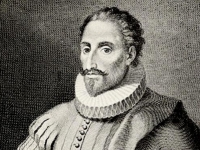Arts
Found the remains of writer Miguel de Cervantes
Author of Don Quixote
The search began more than a year ago and the discovery of the remains of the author of Don Quixote, the masterpiece of Spanish literature, there has been 399 years when he met his death. According to the forensic anthropologist Francisco Etxeberria, "between fragments found in the soil are some belonging to Cervantes. They are many coincidences and no discrepancy", said Tuesday this investigator, who nevertheless said that "we can not do a check mathematics" as allowing the DNA, because no known descendants of Cervantes who compare the remains.
Cervantes is considered the most important Spanish language author. As a soldier he participated in the Battle of Lepanto, was taken prisoner by the Turks and bought their freedom by Trinitarians monks. Although Young began writing, success did not come to maturity. Don Quixote was a real bestseller in its day, but Cervantes died poor because the benefits of his masterpiece were at the hands of the publisher of the novel. By then, Cervantes aspired to be an officer of the Court and as such served as tax collector. He thought he would be famous for his latest novel, 'The works of Persiles and Segismunda', but it was the work Don Quixote gave him universal fame.
His death occurred on April 23, 1616 and was buried in the early church of the Trinitarians of Madrid. A later work in the temple made the remains of Cervantes, his wife and other notables of the time, they were transferred to the crypt of the church, where now found in a mass grave. The Spanish Culture Minister, Jose Ignacio Wert, said on Tuesday that the discovery of the remains of Cervantes positive impact on the development of Letras district of Madrid, an area of the capital of Spain won for urbanism in times of Austria's Monarchy.
In this neighborhood they lived some of the most important writers of the Golden Age of Spanish literature, plus Cervantes, Lope de Vega, the great rival of the author of Don Quixote; Quevedo and Góngora, rival each other. Here's the convent of the Trinity, which was chosen by Cervantes to be buried in appreciation for the efforts made by the monastic order to liberate him.
Liability for this article lies with the author, who also holds the copyright. Editorial content from USPA may be quoted on other websites as long as the quote comprises no more than 5% of the entire text, is marked as such and the source is named (via hyperlink).






